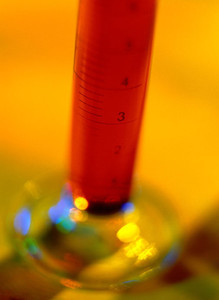In December 2009, FirstWord published the new report Biobetters - Major Players and Market Prospects on the challenging field of biobetters.
It says that on paper, the numbers look good: Worldwide, biological drugs generate more than US$120 billion (Euros 83.62 billion) in revenue. From monoclonal antibody therapies and glycoproteins to vaccines and blood factors, biopharmaceuticals seem to have a healthy—and expanding—bottom line, particularly in emerging and increasingly wealthy Asian and South American markets. But beyond the ledger, there is a different story. As more and more of the earliest, first-generation biologicals such as human insulin and early recombinant forms of human growth hormone become patent-expired, they are thrown into competition with biosimilars—generic versions of the same drug. The impact on the industry is undeniable: The rising cost of existing and expensive biopharmaceuticals contrasted with the lower price point and increasing availability of biosimilars are expected to hit the global market hard.
The solution may lie with ‘biobetters’. Already, innovation leaders like Novo Nordisk, Merck & Co and Roche are breaking ground and building on first-generation biopharmaceuticals to create newer versions of expired-patent biologicals that do the job smarter, faster or with a better side-effect profile.
While most first-generation biologicals are immediate-release and delivered subcutaneously or via infusion, for example, biobetters make a good thing even better. Modified by protein or glyco-engineering, they are more efficacious, require a lower dosing frequency and, most critically, reduce the risk of immunogenicity. Even better, they have lower early-stage R & D costs. But the question remains: Will biobetters be competitive enough to strengthen the pharmaceutical industry’s bottom line?
FirstWord’s compelling investigation into the current state of play between biosimilars and biobetters sets the tone and informational basis upon which the industry must act. Based on solid analysis, research and interviews with key thought leaders, the report examines how biosimilar drugs are being received in Europe and Japan, it reviews the developing American regulatory environment and it identifies the key strategists and leaders in biobetter advances. The report includes a breakdown of commercial areas and a detailed analysis of new technology, novel formulations and innovative manufacturing methods that, along with an emerging biological pipeline, will keep the industry competitive and on track.
The report investigates the biological drug market to determine key strategies for establishing a cutting-edge, competitive biobetter market and which industry innovators are producing new biotechnologies, manufacturing and engineering advances. Furthermore, the report (1) scans the current biological market environment to establish the impact of patent-expired biopharmaceuticals on future drug pricing, reimbursements, competition and R & D strategies; (2) offers a detailed analysis of biobetter strategies from innovation leaders; (3) identifies key marketing and development targets for biobetter advancement; (4) fully examines events in the most critical commercial biopharmaceutical areas, such as monoclonal antibodies, vaccines, glycoproteins, blood factors and insulin; (5) includes insights from industry thought leaders who identify key development opportunities; and (6) offers critical observations regarding the need to substantively differentiate biobetters from biosimilars.
According to the report, the leading biobetter companies are the ‘biobetter strategists’ Novo Nordisk and Merck & Co, the ‘bioleaders’ Amgen, Biogen Idec, Eli Lilly, Roche and Sanofi-aventis, as well as the large pharmaceutical companies AstraZeneca, GlaxoSmithKline, Novartis and Pfizer.
Reference:
Biobetters - Major Players and Market Prospects. FirstWord report FWD0221209. 2009 December .








 0
0











Post your comment